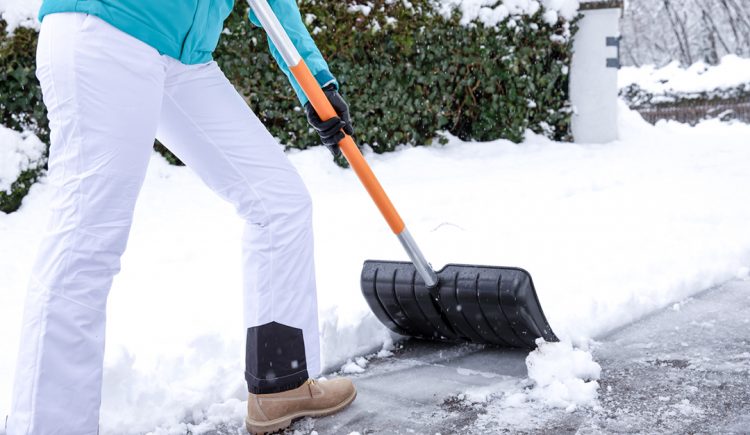(TNS)—If this week is when you get a real dose of the white stuff and have to navigate slick spots on the road and the pavement, here’s a refresher on how to make sure you and your loved ones get through it unscathed by weather-related injuries while shoveling and walking on ice.
Dr. Sandra Hunter, a professor of exercise science and director of the Athletic and Human Performance Research Center at Marquette University in Milwaukee, offered tips on how to reduce the possibility of hurting yourself when interacting with Mother Nature.
“The more rushed we get, the more we sort of ignore things like a tweaked back when shoveling,” she said. “And it’s just silly. You don’t need to do this. You just need to get the car out of the driveway, and that’s what I need to do now (for shoveling). And then I can do the rest when I get home later. It’s just common sense.”
Hunter, who has been looking at exercise injuries for 20 years, says a back injury is one of the biggest problems that can occur with shoveling—that and a concussion. The former, she says, can be insidious because it’s usually not until the next day that you realize you’ve strained your back or irritated one of your vertebrae. Hunter offered some tips to stay safe:
Prepare. It’s no secret that inclement weather is coming. Salt your driveway before the snow arrives so you don’t have to shovel as much.
Pick the proper clothing. Dress as you would for exercising and for the cold: Think layers.
Warm up first. Hunter says shoveling is exercise, and you should warm up for it just as you should before exercising. “It doesn’t have to take long,” she said. “Warming up in some way, shape or form—even just doing some star jumps (jumping jacks) or even just going up and down some stairs to get warmed up” will help.
Ergonomic shovels can make a big difference. Hunter says they are much lighter, and they have contoured handles, which reduce the bending you have to do.
Push, don’t lift. “Once you are shoveling, push the snow rather than trying to lift it,” Hunter said. “If, however, you do have to lift, make sure that you are bending your knees and lifting the snow with your legs and not your back.” She said it’s twisting, throwing the snow and using your back rather than your legs that are really going to do damage. “So tighten your abdominal muscles before you lift. If you do that, it’s really hard to twist, and you really protect your vertebrae.”
Take breaks and keep hydrated. “It’s amazing how quickly you overheat and become dehydrated,” Hunter added.
“Some people have had heart attacks while shoveling; it’s not uncommon,” Hunter said. “Pay attention to signs and pains. One just has to listen to their body. If you got shortness of breath, chest discomfort or discomfort down your left arm, definitely do something about that.” She said not to just endure pain and say, “I’ll just finish this.”
When it comes to navigating icy conditions, Hunter says concussions are probably the biggest injuries she’s seen. Black ice is especially tricky, she said.
“To negotiate ice, you’ve got to keep flat feet, take small steps, and you’ve got to keep your feet wide apart, so you have a big base of support,” Hunter said. “And footwear is huge in terms of having some sort of grip. Any type of movement on ice is going to predispose people to injury.”
The bottom line: The right outwear, prep and shoveling techniques are really important for the winter season. As Hunter says, “Just do it.”
©2021 Chicago Tribune
Distributed by Tribune Content Agency, LLC











